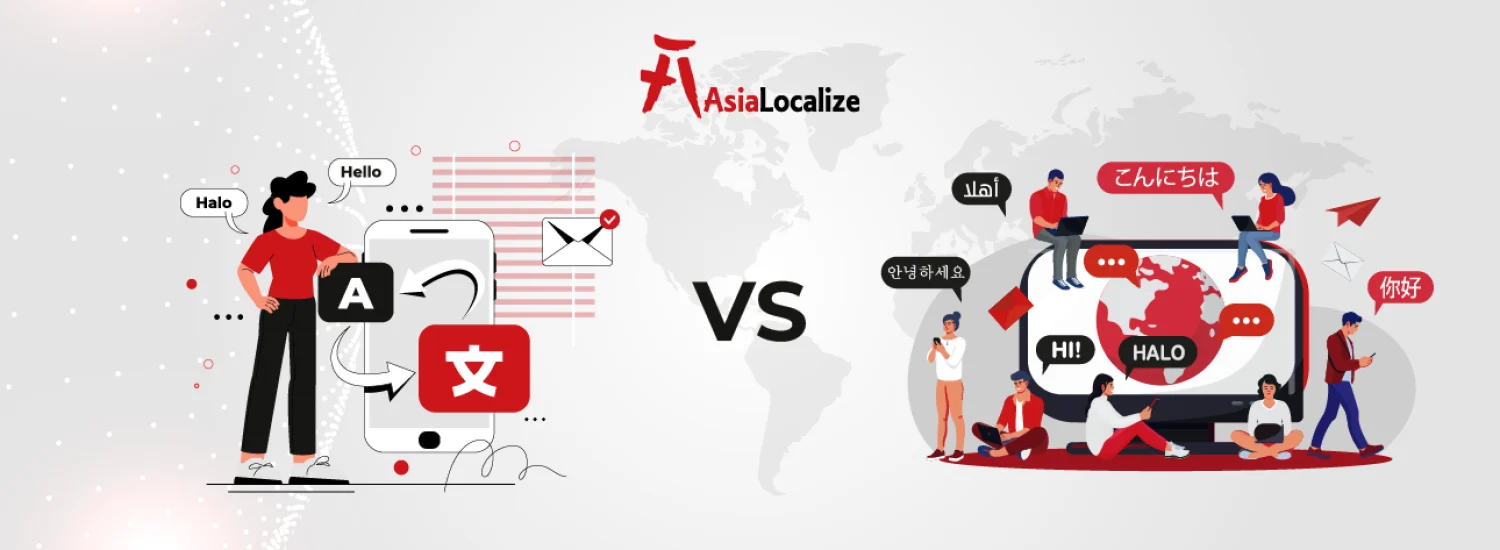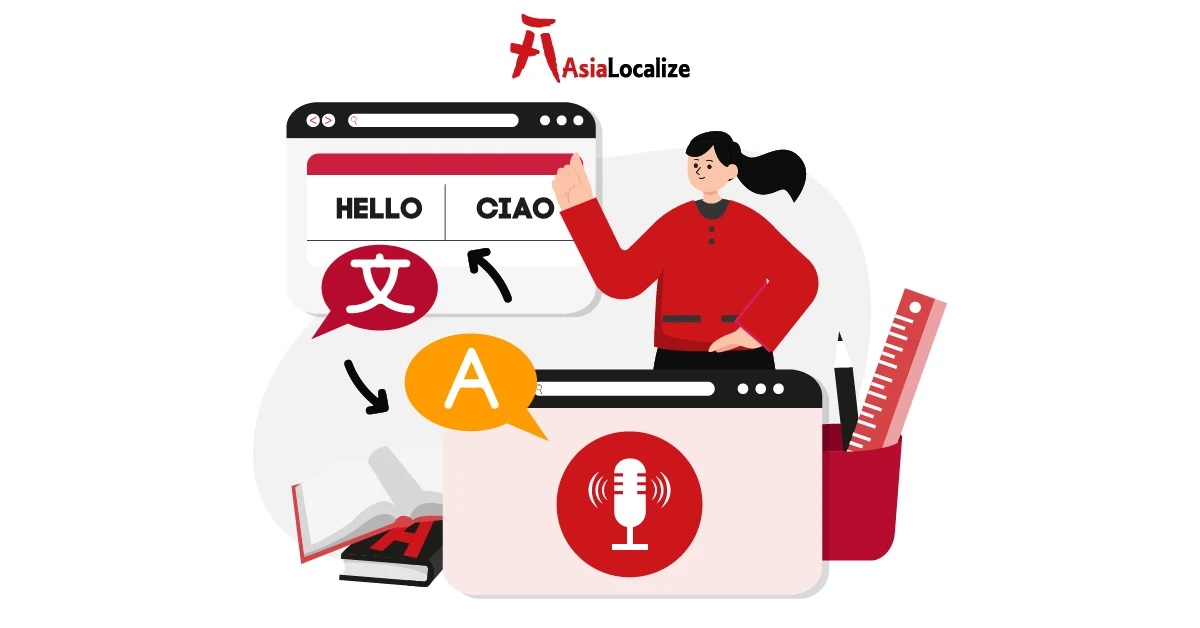75% of shoppers are more likely to make a purchase if they find your product content localized into their own native language.
While it’s a huge opportunity, many businesses fail to understand the differences between translation and localization, using both concepts interchangeably.
Mixing up L10n (Localization) with translation could diminish the overall impact of your message on your target audience and alienate them. Looking into the nuances of translation vs. localization will enable you to customize multilingual communication for the desired impact on your target audience.
In this guide, we will provide a comprehensive translation and localization comparison, highlighting their key differences and applications. Continue reading till the end to gain the maximum benefit in your global market expansion.
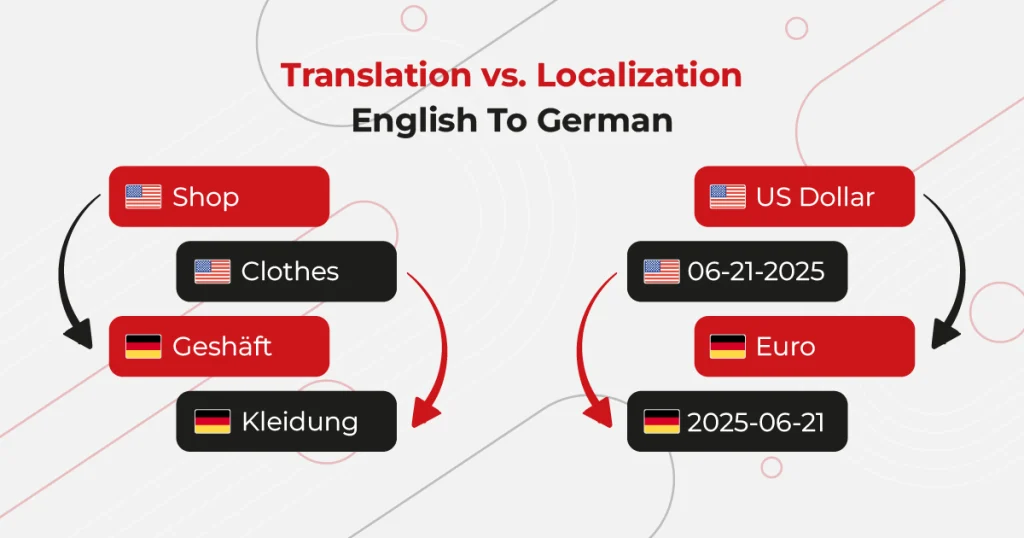
Translation: What is It Really About?
The translation process involves rendering text from one language to another while retaining its original meaning and linguistic accuracy. A deep understanding of both the source and target languages and the cultural nuances is required to ensure the message is well-received in the target market.
Various industries, including healthcare, legal, and eCommerce, utilize document translation to communicate their message with their audience in multiple languages accurately.
Different Aspects of Translation
- Certified Translation
This type of translation is crucial for legal or official documents, such as birth certificates, contracts, and immigration paperwork, where translation accuracy and certification by a qualified translator are required.
- Technical Translation
Often applied in industries like engineering or IT, this form of translation focuses on manuals, guides, and specifications, where precise terminology and an understanding of complex concepts are pivotal.
- Machine Translation vs. Human Translation
While machine translation, like tools such as Google Translate, can quickly convert text, it often lacks context, subtlety, and nuanced understanding.
That’s why when speed is required, it’s better to go for MTPE (machine translation post-editing) where human expertise ensures an undeniable level of accuracy with careful attention to tone and cultural nuances.
Localization In a Nutshell
The localization process involves contextual translation and adaptation to align with the cultural nuances and preferences of a target audience.
It goes beyond translation, taking into account local customs, values, and expectations to ensure that the content resonates with the intended market effectively.
For example, localization requires visual design adjustments and adaptations of idiomatic expressions and regional preferences, ensuring that the content feels natural to local users.
Scope of Localization
- Website Localization
Adapting websites for regional markets involves translating the text as well as modifying the design, currency, and local references to create a seamless user experience for visitors from different cultural backgrounds.
- Software Localization
It involves adapting user interfaces to reflect local languages and conventions, ensuring that all elements of the software—from menus to help documentation—are tailored to meet the expectations of users in specific regions.
- Multimedia Localization
It caters to videos and audio content, incorporating subtitles, voiceovers, and culturally relevant visuals to create engaging and relatable multimedia experiences for various audiences.
Examples of Successful Localization
Netflix’s Region-Specific Content
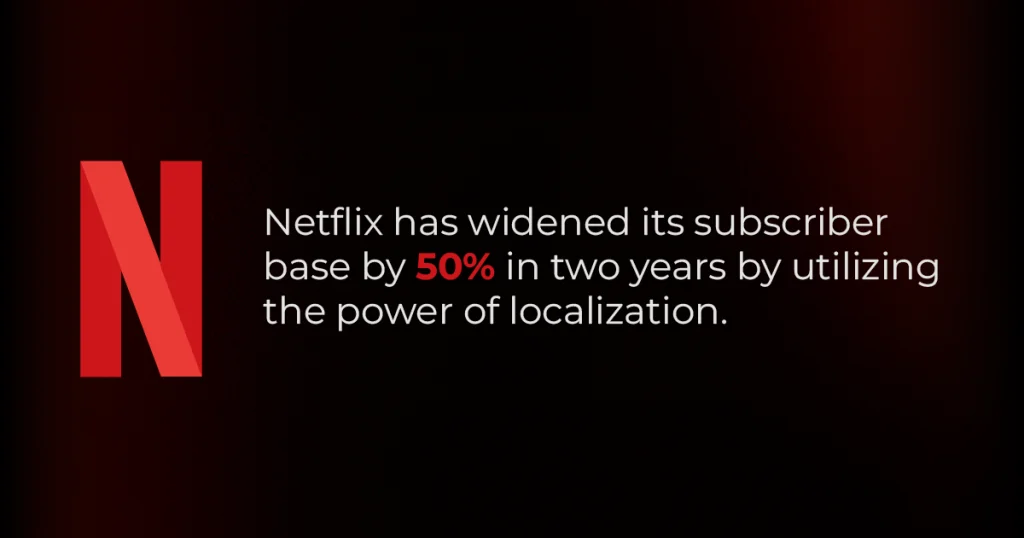
Netflix has put a lot of effort into its localization strategy to deliver culturally relevant and resonant translations in 190 languages.
They have taken the slightest preferences of their target markets into account, even the subtitles and dubs.
For example, they went for dubbed content in countries such as France, Germany, and Japan, focusing on the fact that these markets prefer dubbing rather than subtitling.
Also, they effectively tailor its library to different markets by offering shows and movies that reflect local cultures, supporting 5 to 7 relevant languages for each market based on the user’s location and language settings. Their main goal is to provide their users with seamless, culturally appropriate experiences.
Did you know that Japan has the most extensive library of Netflix titles?
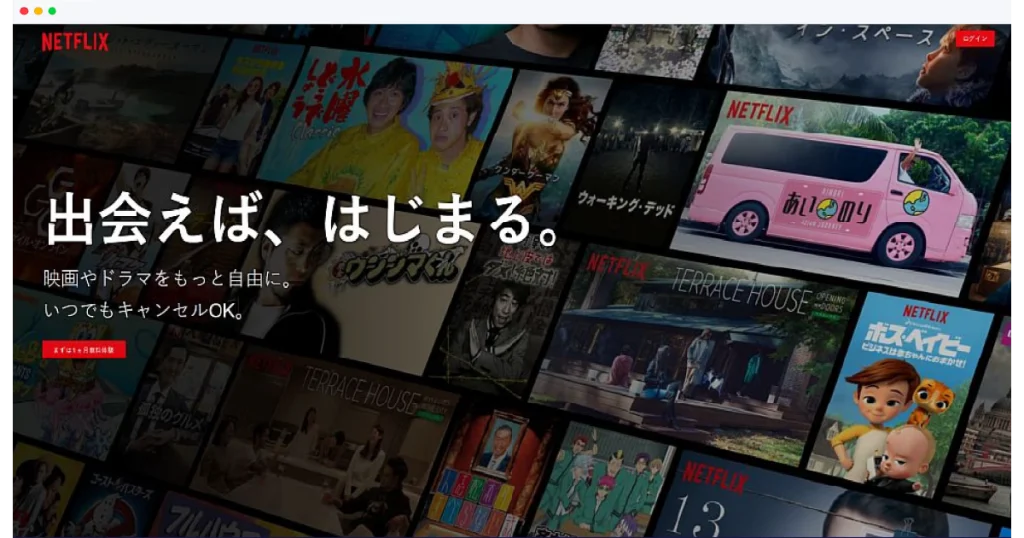
Localization vs. Translation: Core Differences
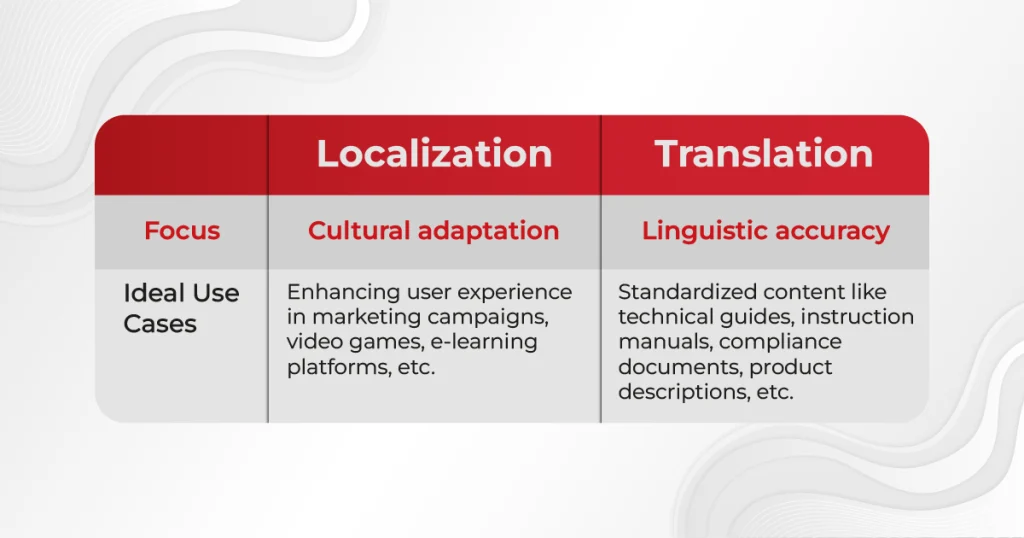
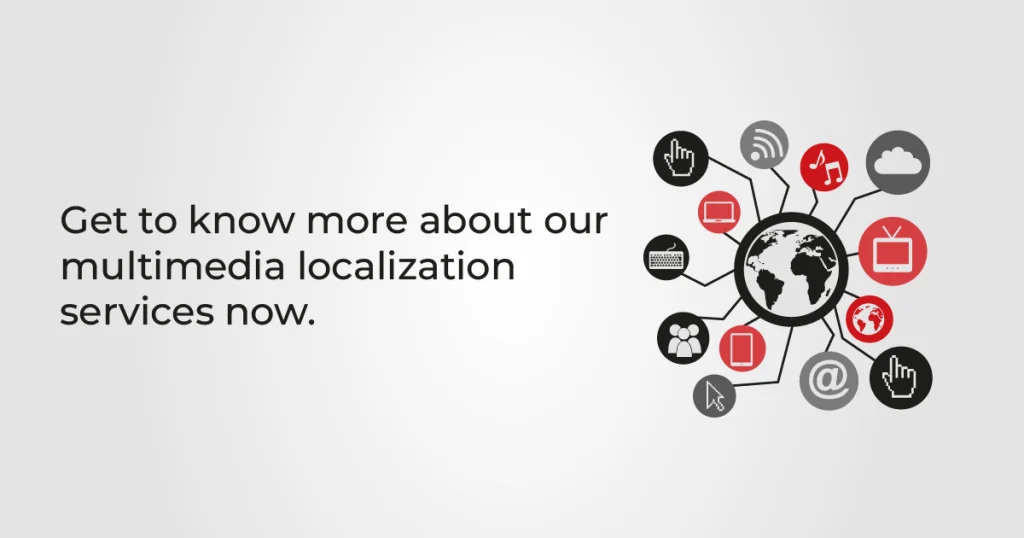
Why Localization is Critical for Global Businesses?
When users have a seamless, like-home experience, they’re more likely to engage with your content, buy your product/service, and turn to be your advocates.
Stats speak louder than words; check the following:
- Grow Your Revenue and Search Traffic
According to a survey, 84% of marketers worldwide have reported the positive influence of localization on revenue growth.
Digital marketer Neil Patel has shared that he saw a 47% increase in search traffic and a 60% in new users after embracing localization.
- Increase User Engagement
A video company has confirmed that they’ve seen a 4100% increase in engagement rates when they shared content incorporating contributions from local staff.
According to this, Locally-targeted content has six times more engagement than globally-targeted posts.
- Increase Conversion Rate
86% of the localized advertising campaigns outperformed the English-only campaigns in click-throughs and conversions.
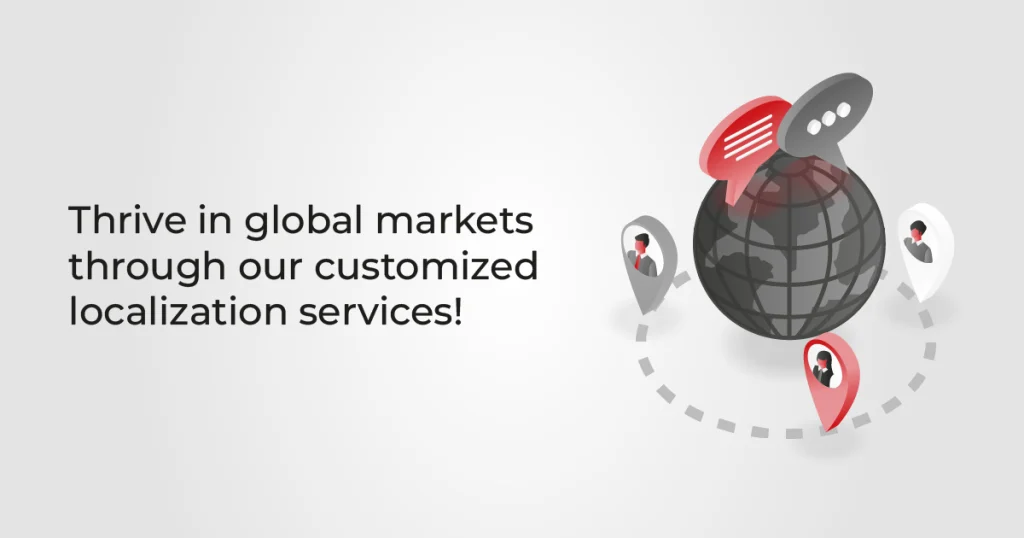
| Thrive in global markets through our customized localization services! |
The Translation and Localization Process
Translation Process
- Rendering the text from the source language to the target language while preserving the meaning and context.
- Conducting a thorough proofreading and linguistic QA process to check for linguistic accuracy, ensuring that grammar, style, and tone align with the expectations of the target audience.
Localization Process
- Modifying visuals, cultural references, and idiomatic expressions to ensure that the content resonates with local customs and preferences.
- Testing comprehensively to ensure localization consistency across various platforms and that all functionalities operate correctly in the local context.
Challenges of Translation and Localization
Hiring an in-house translation and localization team might seem the more economical option. However, here is why you need outside professional support:
- Ambiguity in Translation and Cultural Misalignment
Dealing with ambiguous phrases and expressions that may not have a direct equivalent in the target language is one of the most common challenges you will encounter when translating from one language to another. For example, the Italian word “Dita” might mean fingers or toes, depending on the context.
- Technical Constraints
Localization often involves navigating technical obstacles, especially when adapting software or digital content. Common issues include handling software strings, where the layout and format of text must be adjusted for different languages.
JSON localization presents another challenge. JSON is a lightweight data-interchange format that is easy for humans to read and write and easy for machines to parse and generate.
In the context of localization, technical specifications, and programming constraints can hinder the proper display of translated content in JSON files. Adequate collaboration between translators and developers is crucial to overcoming these hurdles, which will be easily tackled by an expert translation and localization company.
- Budget and Scalability Issues
Localization efforts can quickly become costly, mainly when dealing with multiple languages and cultural adaptations. Moreover, scaling localization processes to keep pace with rapid growth can be challenging.
So, how can companies find a balance between quality and cost-effectiveness? By partnering with a localization company, you will ensure that your projects are both cost-efficient and adaptable to changing market demands.
Industries That Benefit From Translation and Localization
- eCommerce Localization
eCommerce has revolutionized the way consumers shop, and localization has altered how everybody interacts.
From adapting product descriptions to using local currencies and familiar payment gateways, shopping globally has never been easier.
- Gaming Industry Localization
To build an immersive game experience, video game developers must adapt dialogues, voiceovers, and visuals. Not only that, they don’t only translate text but also localize humor, cultural references, visual elements, and sometimes even names.
- SaaS Localization
Software as a Service (SaaS) companies are working toward one goal: to ensure their platforms are user-friendly for users around the world.
Proper localization involves translating user interfaces and help documentation while adapting features to meet local regulations and market expectations. This ensures that software remains intuitive and effective, regardless of geographic location, enhancing usability and customer satisfaction.
- Marketing Localization
Marketing localization is integral for brands looking to launch campaigns in diverse markets. It requires adapting campaigns to align with regional preferences, values, and cultural trends.
Tailoring messages, imagery, and promotional strategies are some of the efforts that should be made to successfully launch your campaigns in diverse markets.

| Our marketing translation services shape messages that resonate with your target audience in Asia. |
Are you unsure where to begin? At AsiaLocalize, you will get the support you need and deserve. We have an extensive team of translators and localization experts to help you, from designing a customized localization strategy to launching your software in multiple languages.
| Get expert language support from AsiaLocalize now! Contact Us Now! |

